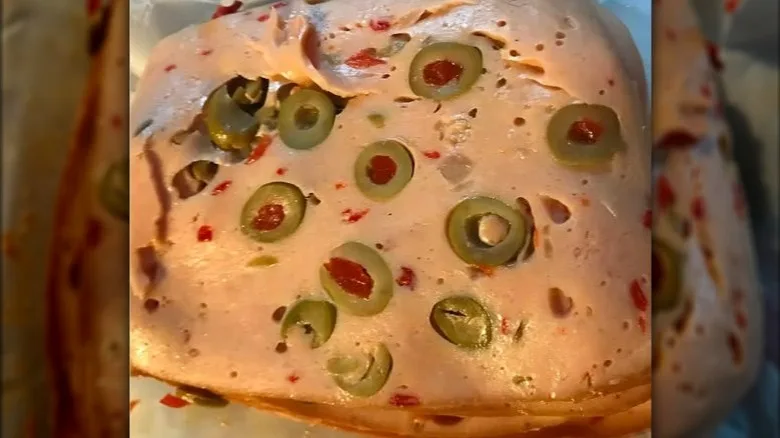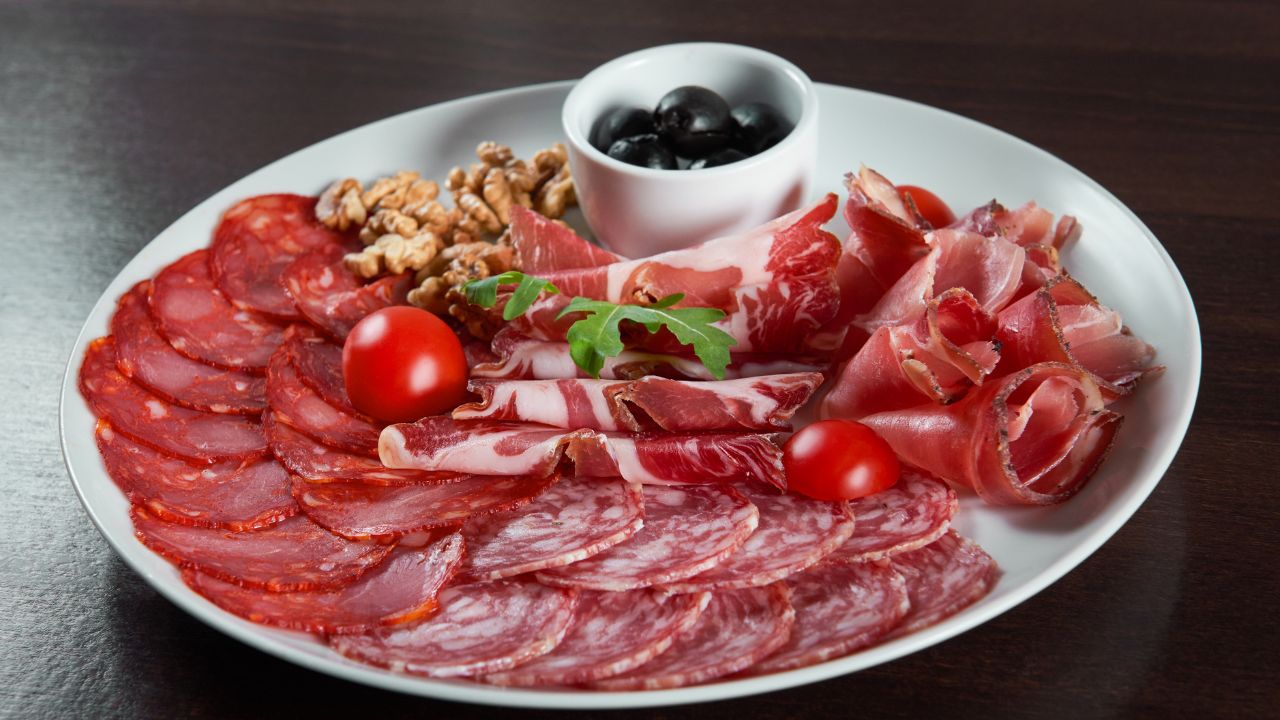It’s funny how some foods seem to slip through the cracks of culinary history. Olive loaf, for example, was once a recognizable name in every grocery store deli case. Today? Most people under 30 probably haven’t even heard of it, let alone tried it. So, where did it go — and why did it fade away, while other processed meats like bologna or salami managed to stick around?
The Glory Days of Olive Loaf
Back in the 1970s and early ’80s, olive loaf had its moment. It was cheap, colorful, and—let’s be real—looked fancy enough for the average sandwich.
Studded with green olives and those signature red pimentos, it had a visual appeal that plain slices of ham couldn’t match. Parents tossed it into lunchboxes, delis stacked it high on sandwiches, and brands like Oscar Mayer kept it stocked in every suburban supermarket.
Culturally, olive loaf fit right in with the era’s obsession with convenience foods. Think Jell-O molds, canned soups, and TV dinners. Olive loaf wasn’t just food; it was part of a movement toward pre-packaged, ready-to-eat meals that matched the pace of modern family life.
The Health Backlash of the ’90s
By the 1990s, though, the story started to shift. America had entered the “fat-free” era, with diet culture pushing low-fat everything as the gold standard of healthy eating. Processed deli meats, often high in sodium and saturated fats, suddenly became suspect. Bologna, pimento loaf, and olive loaf all took a hit.
Michael Moss, in his book Salt Sugar Fat, notes that bologna sales were dropping steadily—down about 1% every year through the decade. Olive loaf, being less iconic than bologna and more of a niche taste to begin with, simply didn’t have the brand loyalty to survive the changing tides. Health-conscious shoppers moved toward turkey slices or freshly roasted meats, leaving olive loaf languishing in obscurity.
Branding and Shelf Space
There’s also the simple fact of retail economics. Supermarket shelf space is brutally competitive. If a product doesn’t sell, it gets pulled.
Bologna could weather the storm because it still had a loyal following and national ad campaigns behind it. Olive loaf? Not so much. Without enough demand, manufacturers stopped producing it at scale, which made it even harder for curious eaters to find. A feedback loop that eventually squeezed it out of the mainstream market.
The Nostalgia Factor
Here’s the interesting twist: for the people who grew up eating olive loaf, there’s a surprising amount of nostalgia. On Reddit, photos of olive loaf often spark comments like, “My grandma always had this in the fridge!” or “That’s childhood right there.” Food has a way of anchoring memory, and olive loaf, while unfashionable today, still tugs at a certain kind of retro heartstring.

You might even spot it occasionally at old-school butcher shops or regional delis that cater to traditional tastes. Boar’s Head still makes an olive loaf, though you’ll have to hunt for it, and some local grocers carry generic versions for the diehard fans.
Could Olive Loaf Make a Comeback?
If Spam can rebrand itself from war-era ration food to Hawaiian delicacy, why not olive loaf? Modern consumers are increasingly drawn to “heritage” foods and nostalgic throwbacks.
Pair that with a foodie culture that loves to remix old classics (looking at you, hot honey + fried chicken craze), and there’s no reason olive loaf couldn’t stage a small, ironic comeback. Imagine a hip Brooklyn deli serving an “elevated olive loaf sandwich” with artisanal mustard and sourdough bread. Stranger things have happened.
But for now, olive loaf lives in the memories of those who grew up in its heyday—an edible relic of an era that loved its processed meats as much as it loved disco and bell bottoms.


















